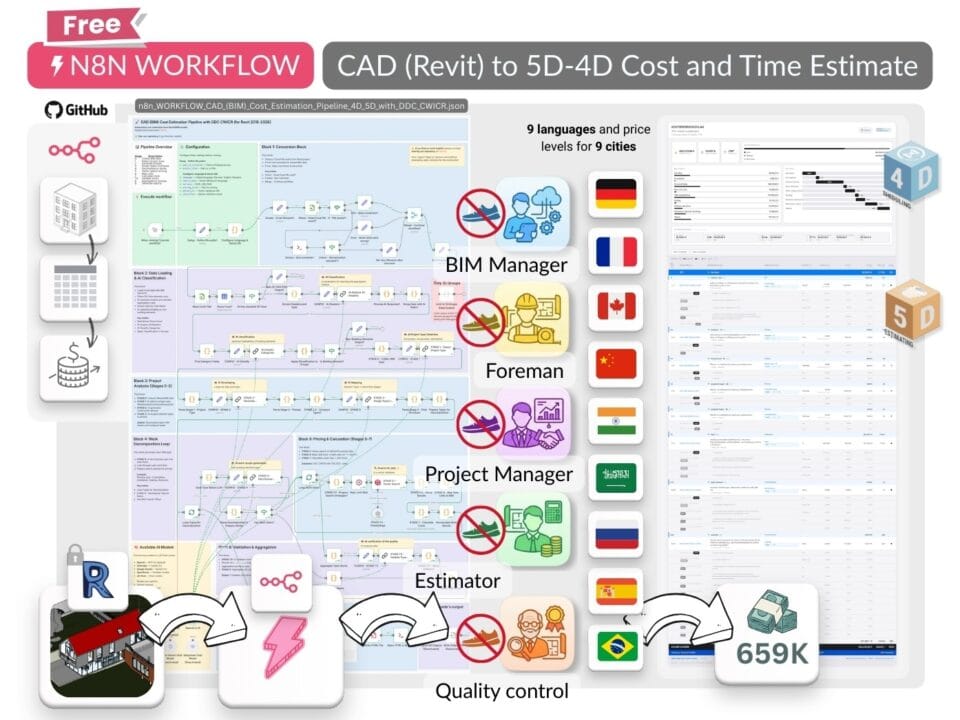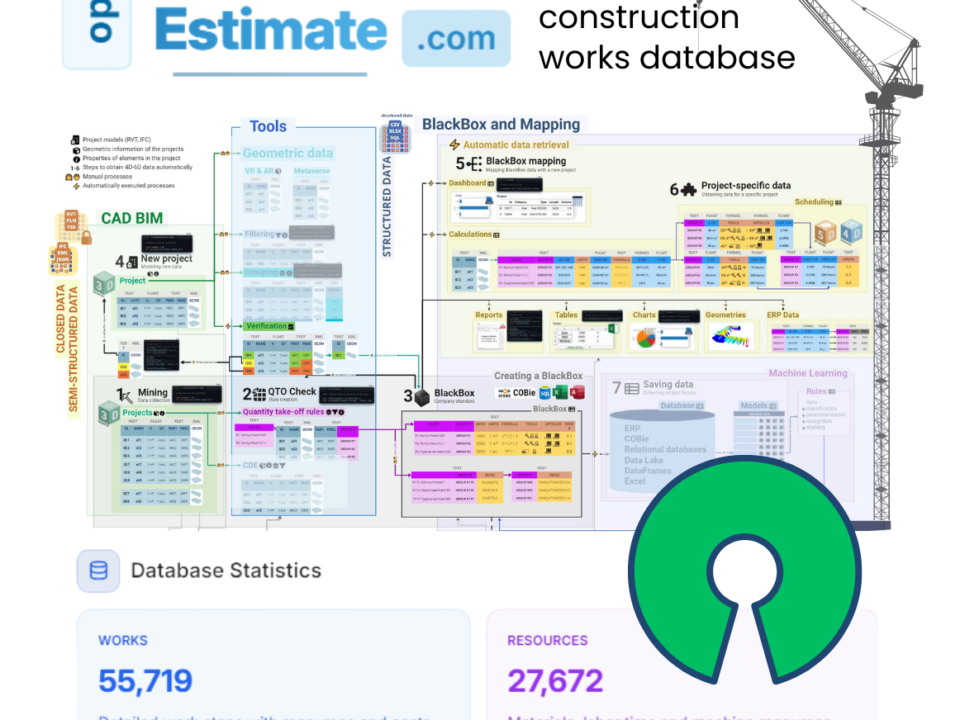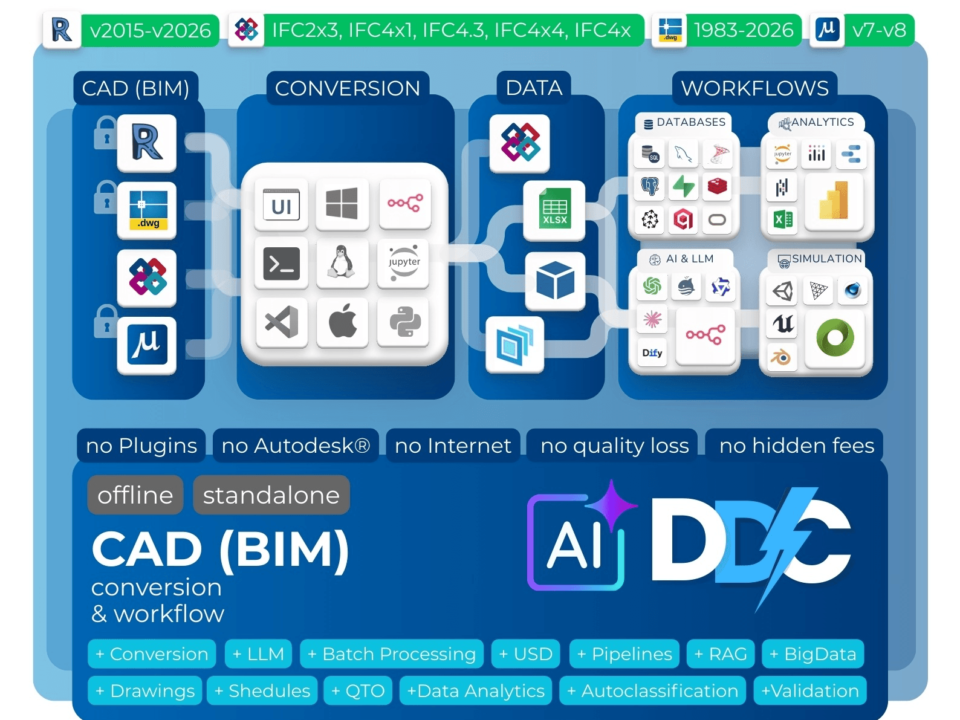The construction industry is at a crossroads, facing both opportunities and challenges in the digital age. The key lies not merely in creating models and gathering data but in verifying, organizing, and fitting them into a coherent whole. This process can take up to 60% of the work, and the main issue that occupies BIM specialists in any construction or design company is getting quality data: verified, cleaned, and prepared.
The Challenge of Data Verification
Data or models are worthless if they are not verified and prepared for further work. In the current scenario, data export is the only source of income for CAD companies, which, unfortunately, cannot give up the possibility to have control over the data export. De-jure all CAD programs allow unloading data into ODBC or only partially into databases, but unfortunately, to further work with them, cleaning and filtering, you need to spend a massive amount of man-hours and try a whole zoo of BIM programs.
The Uncertainty of Connection
With all that, after setting up the export and creating the Pipeline, there is no guarantee that a year later the connection between the programs and the CAD programs' databases will work well. As a result, we live in a data-driven world where you need knowledge of certain program APIs and highly specialized specialists, without whom nothing works. If the CAD or BIM solution provider accidentally changes a couple of names in the API in the next version of the program, all the company's tools will turn into a pumpkin.
The NoBIM Concept
The construction industry is still grappling with one of the lowest levels of digitalization among all sectors. The challenge is to process data, getting all the risks of the human factor by opening and processing each file manually, or to process thousands of projects in an automated pipeline and workflow without BIM specialists being involved.
The NoBIM concept for data in construction projects is emerging, where project data is converted into a large flat table for which a nonparametric geometry file is created. The table with properties and the geometry file are linked to each other via a unique element identifier.
Automation and Efficiency
Thanks to automation capabilities, companies can save hundreds and thousands of hours of work. Automation in construction is not just about cutting costs and saving time; it's about enhancing efficiency, reducing errors, and fostering innovation. It's about moving towards a future where digitalization is not just a buzzword but a practical reality that enhances every aspect of the construction industry.
Conclusion
The construction industry's digital transformation is a complex and multifaceted journey. From data verification to automation, the challenges are many, but so are the opportunities. By embracing new concepts like NoBIM and investing in automation, the industry can move towards a more efficient and innovative future.
The article serves as a call to action for construction professionals, technology enthusiasts, and policymakers to recognize the importance of digitalization in construction. It's time to move beyond traditional methods and embrace the digital tools and strategies that will shape the future of construction.
Facing Issues? Reach Out!
Offer support for any troubleshooting or advanced use-cases

























